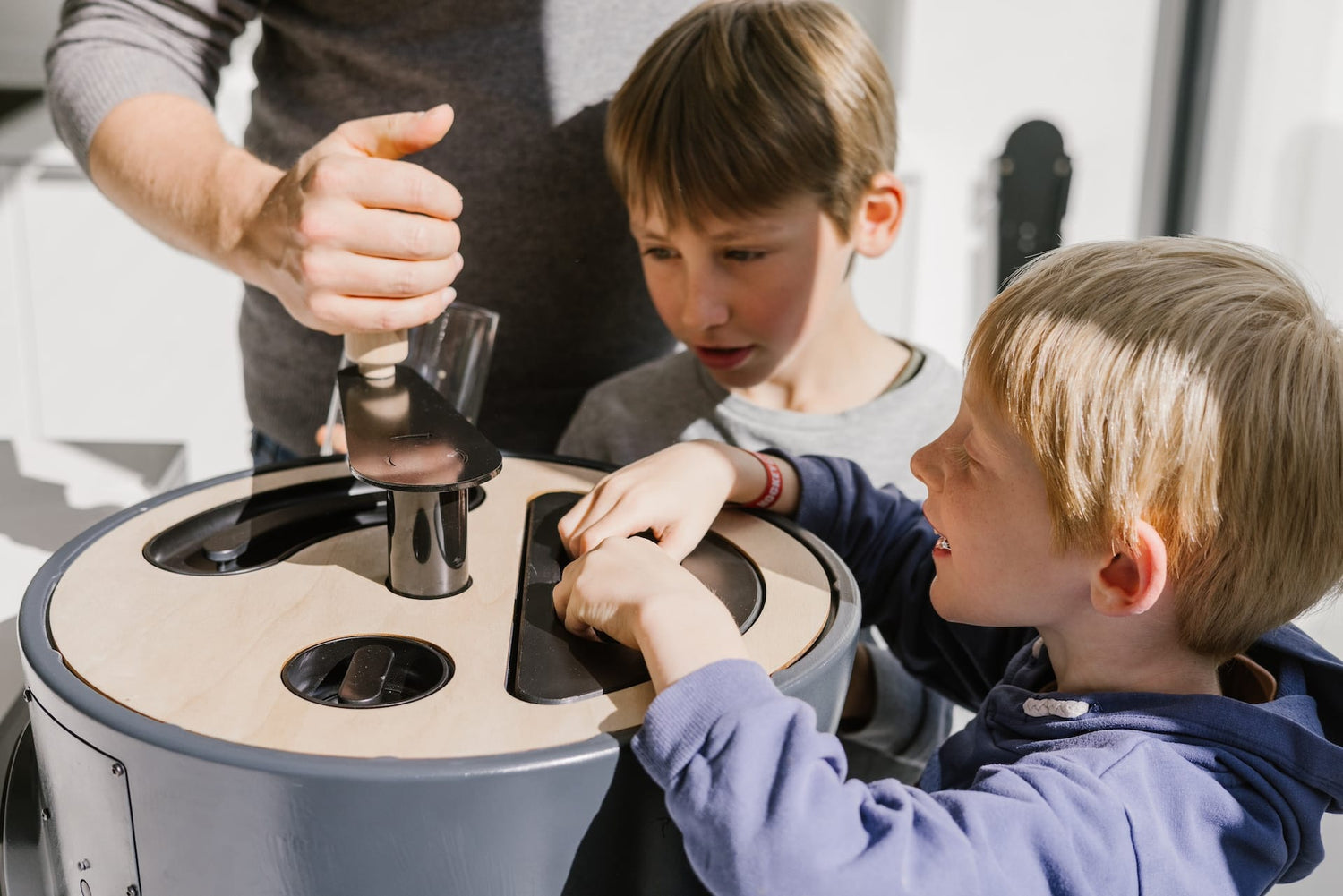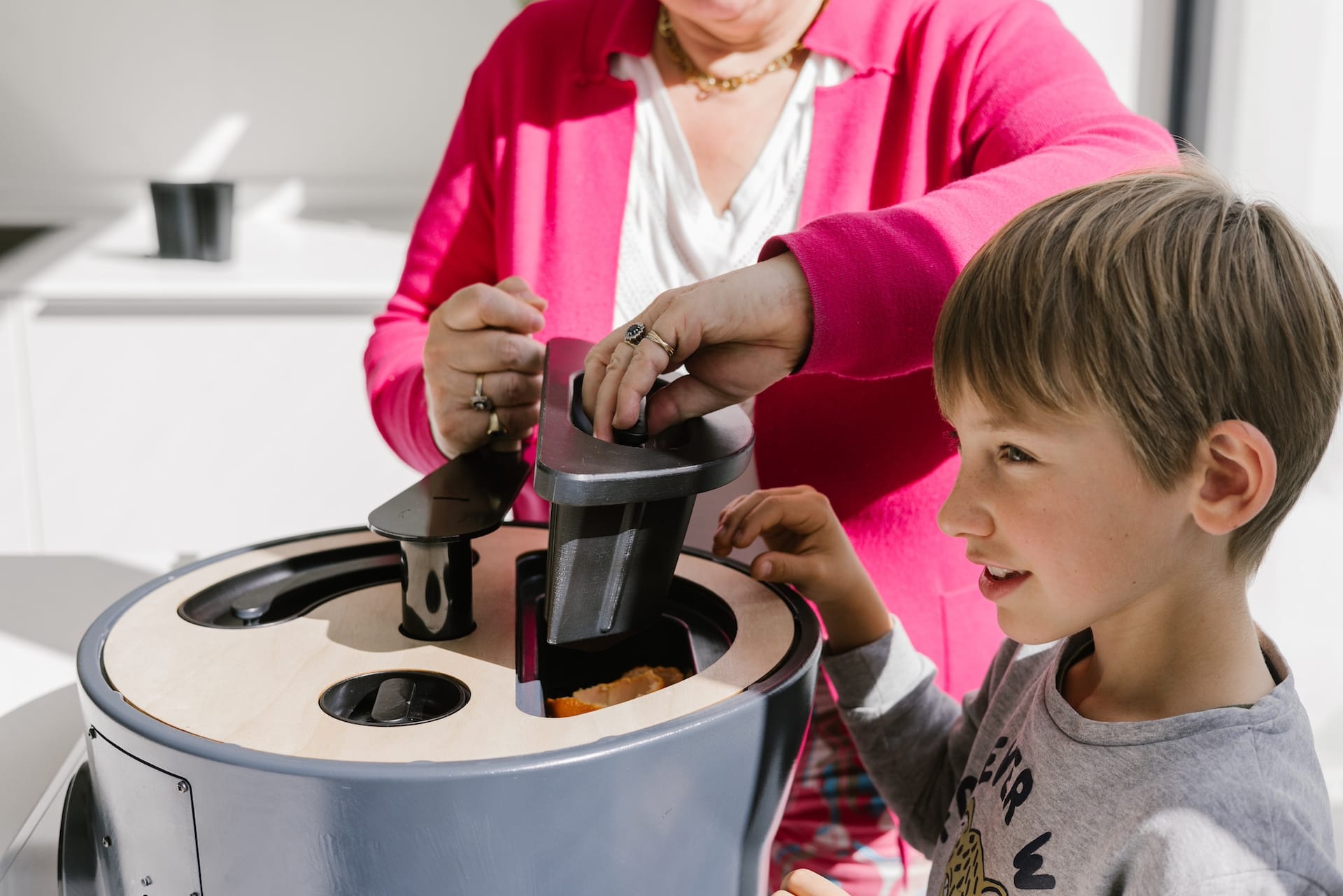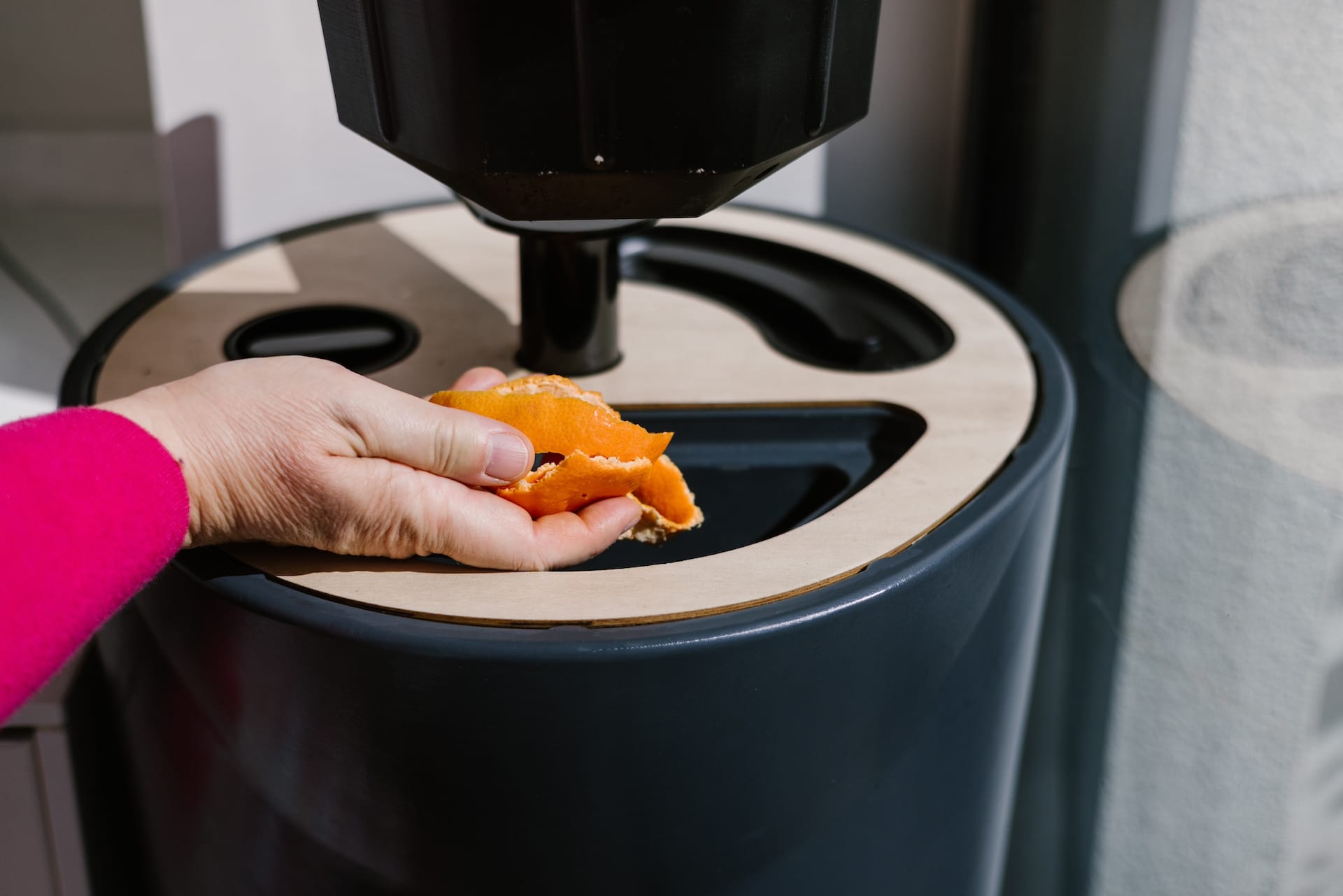The challenge of flies in home composting
Composting is an essential eco-friendly practice to transform organic waste into a useful product for soils. However, this method can sometimes lead to inconveniences, especially when practiced indoors. One of the most common and frustrating problems for indoor composters is the appearance of flies, especially fruit flies and gnats. Although these insects are generally harmless, their presence can quickly become annoying, turning all good intentions into a source of stress. Fortunately, Greenzy has developed specific solutions to prevent this problem and ensure pleasant and efficient composting.
Causes of flies appearing in compost
Flies appear in compost for two main reasons: the abundance of nitrogen-rich materials and excess moisture. Organic waste such as fruits and vegetables, when they decompose, give off odors that attract flies. The latter, looking for a suitable place to lay their eggs, find in compost a perfect environment, especially if it is poorly managed.
In addition, compost that is too wet, resulting from an imbalance between green materials (rich in nitrogen) and brown materials (rich in carbon), can create conditions that are favorable to the proliferation of flies. Poorly aerated compost can also lead to a build-up of gases and heat, attracting these insects even more.
The life cycle of flies and their impact on composting
The life cycle of flies is rapid, which explains their ability to quickly invade a compost bin. The eggs laid by flies hatch within 24 to 48 hours, giving rise to larvae that feed on the decomposing material. Although these larvae contribute in some way to the decomposition of waste, their presence in large numbers is often a sign of an unbalanced compost.
Indoors, flies can be a real problem. Not only can they spread throughout your home, but they can also attract other pests, creating a chain reaction. Additionally, a fly-infested compost bin can signal more serious problems, such as poor aeration or excess moisture, which can slow down the composting process and cause unpleasant odors.
Common mistakes that promote the proliferation of flies
To avoid the invasion of flies, it is essential to understand the common mistakes that favor their appearance. One of the main ones is the excessive addition of nitrogen-rich materials without balancing with dry materials such as dead leaves, paper or cardboard, which absorb moisture and maintain a balanced carbon/nitrogen ratio. Another common problem is the lack of regular mixing of the compost, which prevents good aeration and creates pockets of gas and heat, conducive to the proliferation of flies.
Additionally, leaving the compost uncovered or poorly sealed is an invitation for flies to come and lay their eggs. A composter that is not hermetically sealed or that does not have an effective odor filter is particularly likely to attract these insects.
How Greenzy prevents flies from appearing in compost
Greenzy was designed to eliminate common problems associated with indoor composting, including flies. Here's how this innovative composter manages to prevent these insects from appearing:
-
Continuous ventilation : The Greenzy composter is equipped with a ventilation system that ensures constant circulation of air through the organic waste. This ventilation prevents the formation of gas pockets and maintains an optimal humidity level, making the environment less favorable to the proliferation of flies.
-
An integrated manual grinding system : Greenzy's grinder reduces waste into small pieces, which speeds up its decomposition and reduces the amount of time the waste remains in a decomposable state, making the compost less attractive to flies.
-
An airtight composter : Greenzy is designed to be hermetically sealed, preventing flies from entering or leaving the composter. Combined with the odor filtration system, this creates an effective barrier against insects.
-
Activated Carbon : One of the key factors that attract flies to compost is the smell of decomposing waste. Greenzy has incorporated an activated carbon filter that neutralizes these odors, preventing them from attracting flies. This filter captures the volatile organic compounds that cause odors, trapping them before they can escape the composter.
-
The fly swatter: to guarantee the total absence of flies, the composter is made up of a fly trap based on cider vinegar (to avoid any toxic product) in order to prevent any flies that may have managed to develop in the composter from getting out.
Best practices for fly-free composting with Greenzy
In addition to the technologies built into Greenzy, a few best practices can help maximize composting efficiency while avoiding flies:
-
Balance the materials : Always add a balanced proportion of dry and wet materials to maintain a well-aerated compost that is less attractive to flies.
-
Cut waste into small pieces : Even with a built-in grinder, cutting up large pieces before adding them to the composter can speed up their decomposition.
-
Use the composter continuously : Do not let waste accumulate without treating it. Regularly adding materials and activating the composter helps maintain a constant decomposition process, making the compost less attractive to flies.
Greenzy, the solution to flies and indoor composting
Greenzy makes indoor composting a hassle-free experience. With innovations like the ventilation system, integrated grinder, activated carbon filter and fly zapper, Greenzy eliminates the main causes of fly proliferation, ensuring clean and efficient composting. By following a few additional best practices, users can maximize the benefits of their composter while minimizing the nuisance. Greenzy not only makes indoor composting easy, it transforms it into an environmentally friendly and enjoyable activity for every household.




